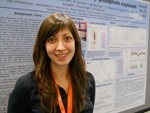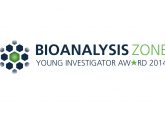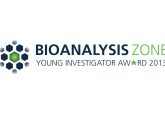2015 Young Investigator finalist: Judit Marsillach

Nominee:
Nominated By:
Supporting Comments:
What made you choose a career in bioanalysis?
Understanding human diseases has been a clear goal of mine since I was a young student and continues to be in my current junior faculty position at the University of Washington. In particular, I am driven by a passion to have an impact on human health by characterizing new human biomarkers of exposure and disease and by improving the way biomarker proteins are measured and quantified. My experience in laboratory medicine as an undergraduate student and the subsequent training received in MS as a postdoctoral fellow have contributed significantly in choosing a career in bioanalysis.
Describe the main highlights of your bioanalytical research, and its importance to the bioanalytical community.
My primary research interest is in the area of environmental health and chronic human disease, with an emphasis in oxidative stress and adductomics. In the environmental health field, my work is focused on characterizing adducted biomarker proteins from plasma or erythrocytes to monitor exposures to organophosphorus compounds. The biomonitoring of these exposures lacks proper methodology. The automatable methods that I have developed to monitor organophosphorus exposures combine immunoprecipitation with MS, providing a 10-fold increase in sensitivity, together with use of state-of-the-art equipment and the potential to be readily translated to the clinical laboratory. In addition, the blood samples can be collected as dried blood spots, facilitating collection, shipment and storage of the samples. In the chronic human disease field, I have been able to accurately quantify 18 proteins by MS from high-density lipoproteins from both healthy subjects and patients with autoimmune diseases. I have demonstrated a good correlation with Western blot analysis, providing more evidence that MS has the potential to replace immunoassays. My next step on this field will be to demonstrate that oxidative stress products adduct proteins, with an emphasis on the paraoxonases enzymes and how these modified proteins can become relevant biomarkers of disease development.
Describe the most difficult challenge you have encountered in the laboratory and how you overcame it.
One of the organophosphorus exposures that I am interested in monitoring involves the anti-wear additive tricresyl phosphate (TCP), which can enter an aircraft cabin via bleed air, exposing passengers and crew to this neurotoxicant. There are three isomers, defined by the position of the methyl group on the cresol (ortho, meta or para). Although the cytochrome P450 metabolism of the ortho isomer has been extensively studied due to exposures through adulterated alcoholic ginger extracts or cooking oil, the metabolism of the meta and para is unknown. When I started monitoring TCP exposures, I targeted T-ortho-CP metabolite adducts on plasma biomarkers, as its structure is well known. Adducted biomarkers were detected using in vitro-inhibited samples but no adducts were identified in vivo. Going back to the composition of the lubricants, I noticed that the amount of ortho isomer is 40-times lower than the meta and para. In addition, literature from 1954 showed that the three isomers are highly toxic to humans. I realized then that I was probably targeting the wrong adduct by MS. I am currently working on defining the meta and para-TCP metabolism to finally be able to provide a method to identify TCP exposures, which cause aerotoxic syndrome.
Where do you see your career in bioanalysis taking you?
I feel my career in bioanalysis is taking me to translating laboratory discoveries into methods and treatments that can benefit human health. The work that I am doing in adductomics on biomarker proteins will allow for more rapid and accurate disease diagnostics. Proteomics is an emerging method not only for studying posttranslational modification of proteins, but also for accurate protein quantification and characterization of modified biomarkers of exposure and disease. The focus of the MS bioanalysis of the experiments that I am conducting represents a significant progress in the fields of laboratory medicine and epidemiology, developing useful methods for diagnosing and evaluating disease states in human health and exposures to xenobiotics. I also feel that the bioanalysis field has matured significantly in the past years and it is progressing at fast pace, with new technologies and more sensitive, accurate and efficient instruments being developed every year. For instance, techniques such as immunohistochemistry and MS can now be combined into MS immunohistochemistry, a new approach that I am very excited to include in my future experiments.
How do you envisage the field of bioanalysis evolving in the future?
The field of bioanalysis is a very progressive discipline. Among all the applications that this field has, I can see bioanalysis making personalized medicine a reality. I envision that portable high sensitive devices to evaluate an individual’s health will be available at any house, reducing significantly healthcare costs. Additionally, biomarker discovery and pharmacogenomics profiles could help in patient characterization and treatment. Altogether, the field of bioanalysis will reduce the diagnostic of a disease and increase the chances of selecting the right treatment for each individual.
Please list up to five of your publications in the field of bioanalysis:
1. Marsillach J, Besler JO, Vaisar T et al. Paraoxonase-3 is depleted from the high density lipoproteins of autoimmune disease patients with subclinical atherosclerosis. J. Proteome Res. doi:10.1021/pr5011586 (2015) (Epub ahead of print).
2. Marsillach J, Suzuki SM, Richter RJ et al. Human valacyclovir hydrolase/biphenyl hydrolase-like protein is a highly efficient homocysteine thiolactonase. PLoS One 9(10), doi: 10.1371/journal.pone.0110054 (2014).
3. Marsillach J, Hsieh EJ, Richter RJ et al. Proteomic analysis of adducted butyrylcholinesterase for biomonitoring organophosphorus exposures. Chem. Biol. Interact. 203(1), 85—90 (2013).
4. Marsillach J, Richter RJ, Kim J et al. Biomarkers of organophosphorus (OP) exposures in humans. Neurotoxicology 32(5), 656—60 (2011).
5. Marsillach J, Aragonès G, Mackness B et al. Decreased paraoxonase-1 activity is associated with alterations of high-density lipoprotein particles in chronic liver impairment. Lipids Health Dis. 9(46), doi:10.1186/1476-511X-9-46 (2010)
Please select one publication from above that best highlights your career to date in the field of bioanalysis and provide an explanation for your choice.
I select publication #1. The main reason for my selection is that it clearly exemplifies progress of the field of bioanalysis, moving from the traditional immunoassays to the innovative MS accurate quantification of proteins in biological matrices. This article combines my expertise in the paraoxonase enzymes, gained during my graduate work, and MS, learned during my postdoctoral studies. To me, this publication represents the peak of the iceberg of experiments that I would like to conduct in the following years, combining the capabilities of measuring proteins in complex mixtures with posttranslational modifications and assessment of disease states/exposures.





